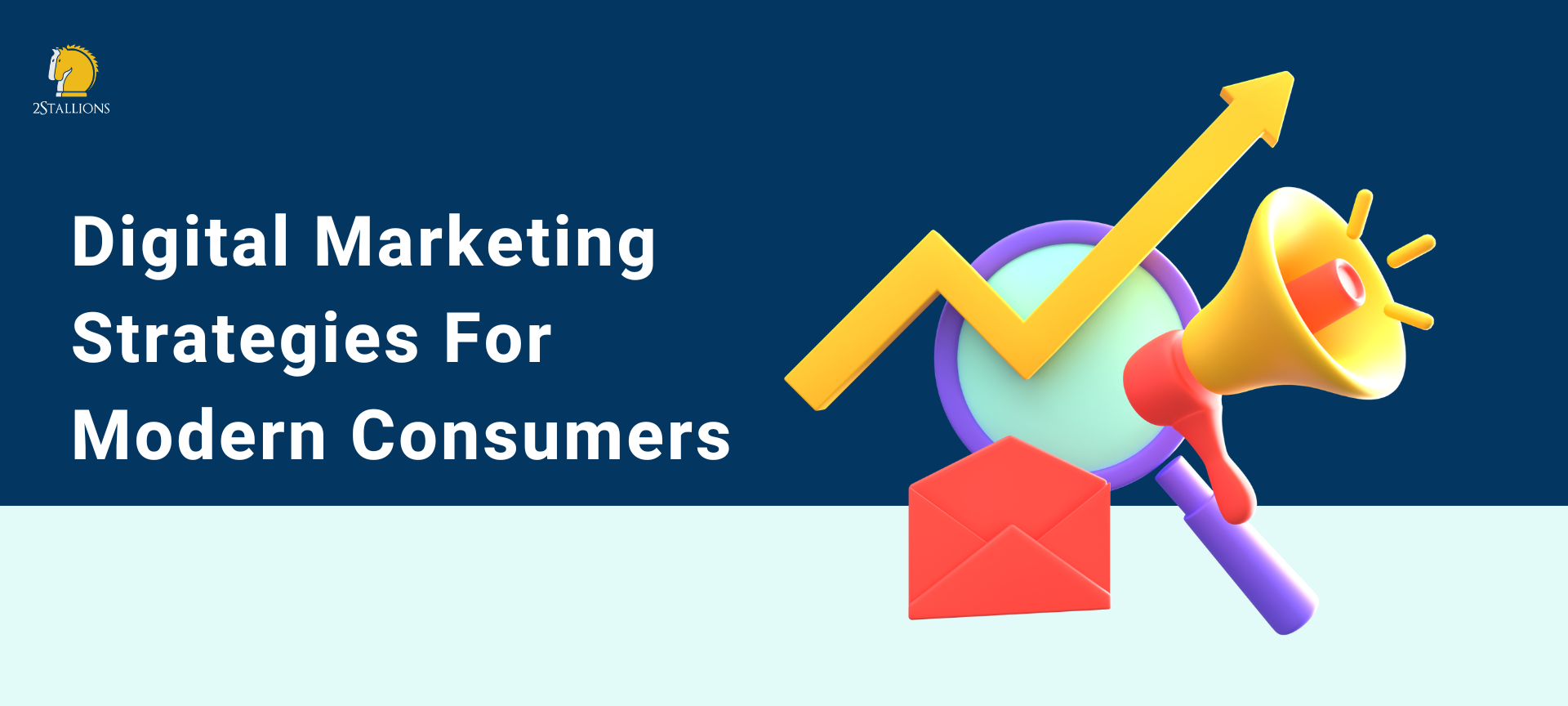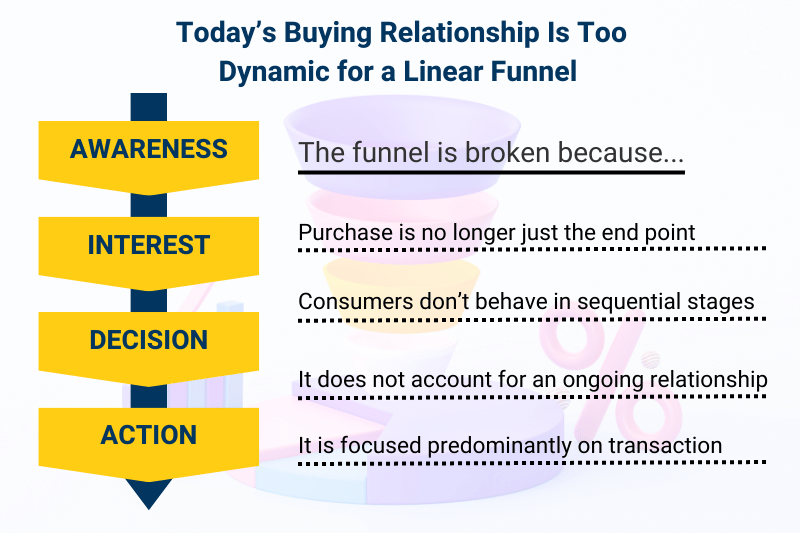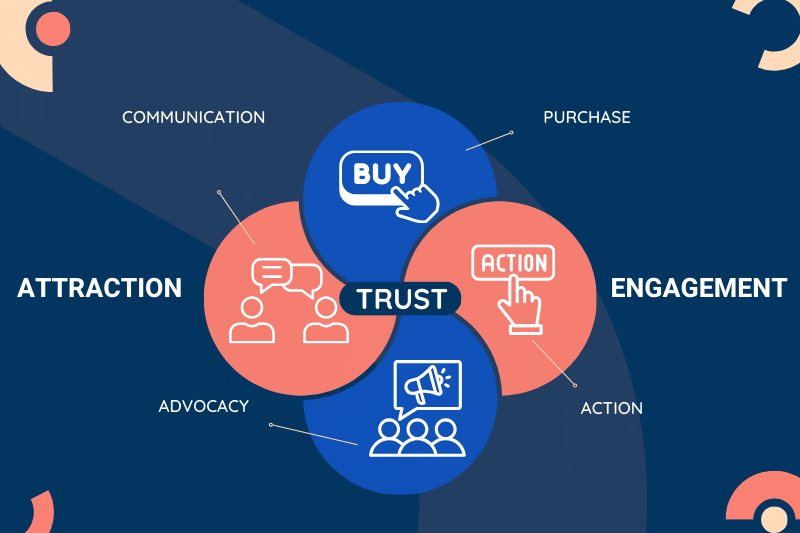SHARE

The dynamic shifts in the consumer landscape have given rise to novel marketing models that businesses must adapt to maintain a competitive advantage. The AIDA (Attention, Interest, Desire, Action) digital marketing funnel has long been used to understand and influence consumer behaviour.
However, with the rise of new technologies and consumer habits, digital strategies are now venturing beyond the traditional AIDA model to engage the modern consumer effectively.
The modern consumer, comprising both Generation Z and Generation X, no longer follows a linear path of Attention, Interest, Desire, and Action. As a result, marketers must adapt their approaches accordingly to capture and maintain the interest of these digitally native individuals. This article delves into the evolving landscape of online engagement, exploring the digital model beyond AIDA to engage the modern consumer effectively.
Consumer Vulnerability Changes the Business of Brands
Consumers are no longer passive players in brand interactions. This shift has rendered brands vulnerable to an ever-watchful audience scrutinising their every move. Consumers demand a more profound connection that aligns with their values, resonates with their emotions, and addresses their concerns.
This vulnerability that brands face is twofold: on the one hand, they’re exposed to the vigilant eyes of a digitally empowered consumer base that seeks authenticity. On the other hand, brands can embrace this vulnerability as a gateway to forging genuine connections.
By acknowledging the changing dynamics and proactively adapting their strategies, brands can navigate this landscape, transforming vulnerability into an avenue for trust-building and lasting engagement.
 (2023 Edelman Trust Barometer Special Report: The Collapse of the Purchase Funnel)
(2023 Edelman Trust Barometer Special Report: The Collapse of the Purchase Funnel)
Why is Transformative Digital Strategy Necessary?
Due to rapid changes in the digital landscape, surveys have found that consumers no longer subscribe to a linear marketing funnel. Many have expressed their vulnerabilities due to recent catastrophic events and technological advancements. The new generations are building resilience in multiple facets of their lives, including consumer behaviour.
A transformative digital marketing strategy is a commitment to understanding and anticipating the consumer’s evolving needs. It’s a recognition that brand-consumer interactions are no longer one-dimensional but a multifaceted journey influenced by various touchpoints and interactions. It involves leveraging data insights, embracing agile methodologies, and integrating technology to create experiences that resonate with the empowered consumer.
Exploring The Importance of Digital Marketing Strategy in Modern Business
In the contemporary landscape, where technology is intertwined with every facet of daily life, the role of digital marketing strategy is an absolute necessity for businesses of all sizes. A robust digital marketing strategy serves as the compass that guides an organisation’s journey, shaping its online presence, engagement, and growth.
- Navigating the Digital Landscape:
The digital world is constantly changing and evolving. This dynamic nature presents both opportunities and challenges for businesses. Crafting a comprehensive digital marketing strategy that understands and caters to the target audience is akin to preparing for a prestigious “Brand of the Year” award.
It’s an uphill climb, with competitors close behind and the temptation to focus more on products than consumers. Brands that commit to adeptly navigating the digital landscape gain a distinct advantage in the market.
-
Staying Relevant and Competitive:
A strategic digital approach is not just an option; it’s a necessity. It keeps a brand relevant and competitive in a landscape where digital engagement shapes consumer behaviour.
Brands that fall out of sync with this landscape struggle to connect, particularly with the digital natives. Embracing a transformative digital marketing strategy tailored to these new generations’ dynamic purchasing patterns and behaviours ensures that your brand remains relevant in the fiercely competitive digital marketing arena.
-
Targeting the Right Audience:
A well-crafted digital marketing strategy deciphers the target audience’s demographics, preferences, and behaviours, enabling businesses to tailor messages and offerings accordingly.
By aligning the digital marketing model with consumer patterns and preferences, your business gains an edge in resonating with and attracting high-quality leads. Instead of skimming the surface with generic campaigns, brand gains the insight needed to engage and understand its audience: who they are, what they want, and where they’re present.
-
Enhancing Customer Experience:
A digital marketing strategy isn’t just about clicks and conversions; it’s about enriching the customer journey across every touchpoint. That resonates with the audience at every stage, fostering lasting connections and maximising the overall impact of the brand’s online presence.
From a user-friendly website to responsive customer service on social media, creating a consistent and positive digital experience cultivates brand loyalty and advocacy. The new generation, led by Gen Z and X, thrives on ongoing engagement.
Studies reveal that these cohorts are more inclined to repeat purchases, advocate for brands, and engage with brand content when trust is established. And there’s no better way to foster trust than by being present, approachable, and consistent across all marketing channels.
 (2023 Edelman Trust Barometer Special Report: The Collapse of the Purchase Funnel)
(2023 Edelman Trust Barometer Special Report: The Collapse of the Purchase Funnel)
Differentiating Between New Marketing Model & AIDA
The need for a new marketing model derived from Edelman’s Trust Barometer survey, whereby more than 15,000 respondents from over 14 nations shared their opinions on how recent events shaped their consumer behaviour.
As we delve deeper, it becomes clear that the traditional AIDA (Attention, Interest, Desire, Action) model, while still relevant, is being complemented by a new and more intricate marketing approach. This new model responds to the scepticism among Gen Z and Gen X consumers.
Let’s explore the contrasts between the new marketing model and the conventional AIDA framework:
Purchase is not the end point; often, it’s the starting point.
In the AIDA marketing funnel, Action dictates the end of the buyer’s journey. Traditionally, once a purchase has been made, it is up to the brand to figure out a way to entice customers into repeating a purchase, whether it’s a marketing list, subscription-based, and so forth.
The new model aims to restructure the funnel into an orbital loop around trust. In the age of excess, consumerism is like second nature; people are hopping from one product to another, and the only thing that ensures repeated purchases is the brand’s trustworthiness.
Elements like value for money, transparency in the manufacturing process, and the ability to address brand shortcomings are pivotal to this newfound trust.
Consumer interest in a brand intensifies post-purchase as they actively seek brands that offer comprehensive aftercare and fulfil their expectations beyond the point of sale. Consumers are:
- The evaluators.
- Critically assessing the brand’s alignment with its values and ethical considerations.
- Reshaping the purchase concept as a trust-driven journey.
Ongoing engagement builds attraction, which leads to further engagement.
Consumer behaviour is no longer linear. Constant engagement informs customers of the brand’s potential. A brand’s strategic choice between a one-time success and constructing a lasting empire depends on its ability to engage consumers. 79% of consumers actively participate in various brand-related activities, including content consumption, brand initiatives, social media interactions, and sharing valuable feedback.
This dynamic engagement is an observatory, allowing consumers to observe a brand’s ethical stance, competence, and resonance with their lifestyles and preferences. Unlike the traditional marketing model, which primarily emphasises stages like Awareness, Interest, Action, and Loyalty, consumers often reserve the initial steps after purchasing.
Brand action reinforced by communications builds trust.
Aligning the brand’s actions with its communication strategies helps to navigate trust-building in Gen Z and Gen X consumers. The competence, ethics, and relevance triad should reflect across all communication channels, creating a cohesive narrative that resonates with these demographics.
Ensuring that a brand’s actions reflect its communication reinforces the sense of authenticity and reliability that Gen Z and Gen X consumers prioritise. This consistency addresses the scepticism that often accompanies contemporary consumer behaviour. When a brand consistently embodies its values, it fosters a sense of credibility vital for establishing trust in the digital age.
Trust drives growth, increasing purchases, advocacy, and loyalty.
The Edelman Trust Barometer Survey shows a substantial 67% of respondents expressed their tendency to remain loyal to a brand, pursue engagement, and even recommend it to others despite an occasional misstep or shortcoming. Trust is a force that encourages multifaceted growth within a brand’s ecosystem.
Trust transcends singular transactions; it influences every facet of a consumer’s journey, encouraging repeat purchases, advocacy, and loyalty. This phenomenon solidifies a brand’s standing within the competitive market and creates a resilient consumer base that remains steadfast despite challenges. This inherent power of trust is a testament to its far-reaching impact in nurturing the growth trajectory of contemporary brands.
The differentiation between the new marketing model and AIDA reflects the evolving consumer landscape and trust-building in digital marketing. As brands navigate the ever-changing consumer expectations, this shift acknowledges that trust is the bedrock of enduring engagement and meaningful relationships.
Navigating the Cycle of Trust Model
Building trust is crucial for any brand’s success in today’s digital landscape. With the rise of digital natives, who are inherently sceptical and discerning, brands must adopt ethical marketing practices and create engaging content to foster loyalty.
The Cycle of Trust Model provides a framework for brands to navigate this landscape successfully. It begins with establishing a strong brand identity and consistent messaging that aligns with the target audience’s values. By doing so, brands can build credibility and establish themselves as trustworthy entities.
Content creation plays a pivotal role in this model. Brands must create valuable, relevant, authentic content that resonates with their audience. This content should not only inform and entertain but also address the pain points and aspirations of consumers.
Through consistent delivery of high-quality content, brands can cultivate trust over time. This trust leads to increased engagement from consumers, who feel confident in the brand’s ability to deliver on its promises.
However, building trust is an ongoing process. Brands must continuously evaluate their strategies and adapt to changing consumer expectations. By consistently delivering on promises, being transparent in their communication, and prioritising ethical marketing practices, brands can foster long-term loyalty from their audience.
Establishing Trust as the Foundation
Nowadays, when people need a product or service, they start by researching on their devices rather than immediately contacting vendors.
Over 70% of searches begin with general terms like “CRM software” rather than specific brand names. Connecting with a salesperson often comes later, if at all. By that point, buyers already possess a wealth of information about a company’s reputation, product details, and reviews of its achievements and setbacks.
As digital natives adapt to the tides of modernity, brands that openly share their truths secure a place in consumers’ hearts. This authenticity forms a bridge of trust, fostering genuine connections and nurturing loyalty.
Moreover, as modern consumers grow increasingly sensitive to ethics and sustainability, it takes a brand with depth to thrive in a marketplace where anyone can sell anything online. Brands like Adidas, Ecosia, and Patagonia lead this charge, incorporating values and advocating for social issues within their marketing strategy.
By championing ethics, they sell products and make a lasting impact that profoundly resonates with conscious consumers.
Crafting Dynamic Engagement
Engagement propels brands from passive observers to active partners in the consumer’s journey. This shift means that brands are no longer just there to promote – they’re walking alongside consumers as they navigate the modern marketplace. This change marks a move from transactions to more meaningful relationships, where brands actively interact and create experiences with their audience.
Brands have become companions, guiding consumers through the maze of choices and options in today’s world.Content creations bridge your brand’s authenticity with consumers’ aspirations—picture interactive campaigns as inviting avenues for meaningful dialogues and utilising contests, challenges, and user-generated content to spark active participation and conversations that surpass surface-level interactions.
Moreover, community-building amplifies this by establishing a tribe around your brand, fostering engagement, advocacy, and a genuine shared sense of belonging among your audience. This thriving community further solidifies consumers’ connection with your brand.
Fostering Lasting Loyalty
The evolution of brand loyalty transforms loyal customers into vocal advocates who champion your brand. This loyalty is further facilitated by providing exceptional experiences after the purchase, significantly establishing enduring brand loyalty.
Encouraging repeat business becomes the tangible outcome of this loyalty, achieved through initiatives like loyalty programs, personalised offers, and thoughtfully designed post-purchase engagement strategies. These approaches are pivotal in converting one-time buyers into devoted patrons invested in your brand’s journey.
Conclusion
As we navigate the dynamic landscape of modern marketing, the new trust cycle model emerges as a transformative paradigm that reshapes brand-consumer relationships.
In an era where trust is the currency that drives engagement, loyalty, and advocacy, this model propels brands to cultivate authenticity, transparency, and ethical practices. From building trust as the foundation to crafting dynamic engagement and fostering lasting loyalty, each phase of the transformative digital marketing strategy resonates with the needs and desires of today’s discerning consumers.
As consumers evolve into empowered digital natives, brands must adapt strategies to meet these new expectations.
The transformative digital strategy transcends the traditional marketing funnel by placing trust at the heart of the journey, recognising that purchase is not the end but a beginning. By embracing this model, brands stand poised to capture attention and foster enduring relationships built on trust.
The intersection of transparency, engagement, and loyalty within the model ushers in a new marketing era, one where the authenticity of connections triumphs over fleeting transactions.





